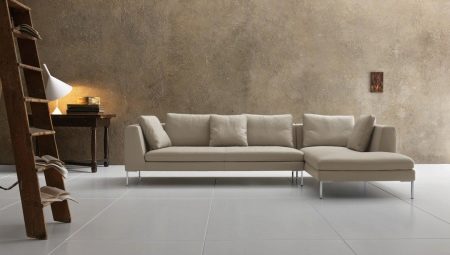Leg sofas are considered practical and reliable elements of furniture. They are easier to move to a location, below them it is easier to remove dust and dirt. However, not all types of supports are equally durable. The material in this article will help you understand the features and varieties of sofas with legs, as well as tell you what to look for when choosing your favorite option.
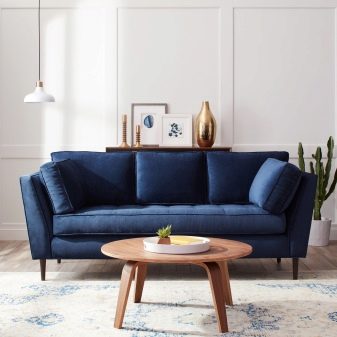
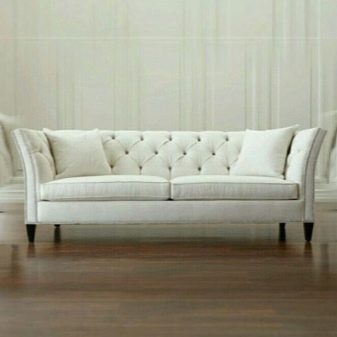
Features
Leg sofas can be very diverse. Wherein the type of supports can differ not only in shape, but also in height. Supporting structural elements give it stability, as well as decorate the product. Often they are a tool for emphasizing a specific interior style. For this reason, the choice of such products must be approached thoroughly.
Thanks to the supports during transportation of the sofa from place to place, the upholstery of the lower side of the structures is not abrased. Sofa legs create the necessary support and are responsible for the safe operation of products. They are by no means universal: the supporting elements are selected in accordance with the weight ratio with the design.
Moreover, the best of them have anti-friction and non-abrasive coating.
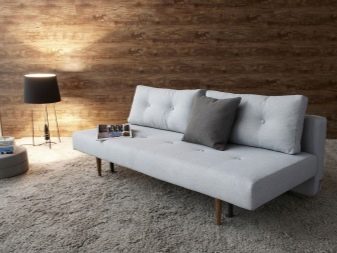

Varieties
Today, brands present to buyers a wide range of designs of upholstered furniture, striking even the most demanding customers. Products vary in shape, type of transformation mechanism, size, functionality and degree of convenience for users. There are several ways to classify a market assortment.
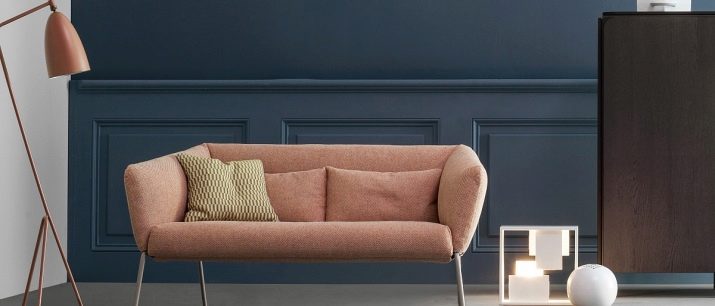
For example, the lineup is divided into products with and without armrests. Variants of the first type can be hard and soft, thin and voluminous, standard and functional. Often, these elements are equipped with countertops and internal storage systems. In addition, the armrests can also be organizers of sofas, making up a set of a table and poufs located under it.
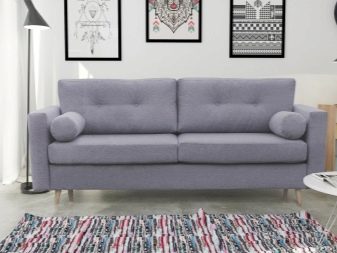
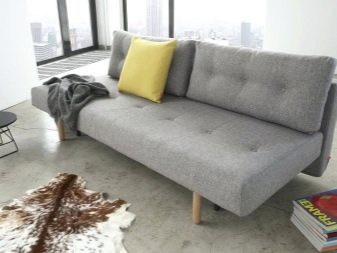
In shape
All known varieties of leg sofas are divided into 5 types, however, the products of each group have their own characteristics.
- Direct sofas differ in a linear form, suitable for placement along walls and in the center of rooms, complemented by comfortable armchairs. They can have a different configuration and height of the backs, in the presence of expensive upholstery they look solid and impressive in the interior.
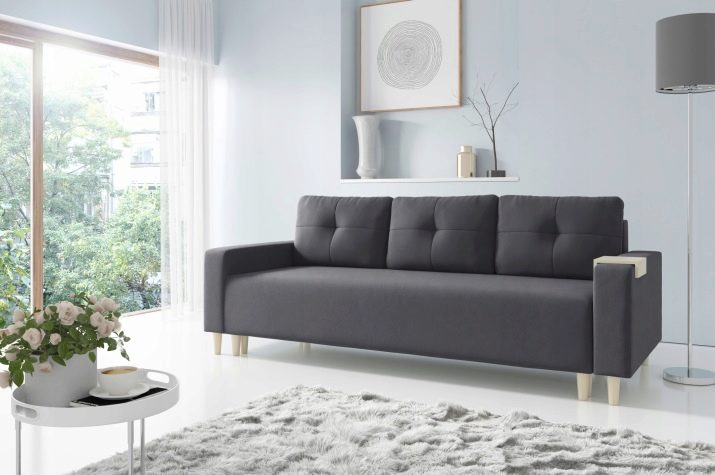
- Corner - are divided into 2 large groups: L-shaped and U-shaped. Both of them are capable of zoning space, indicating the boundaries of a particular functional zone. Their appearance can be different, corner elements can be poufs, ottomans, minibars, tables.
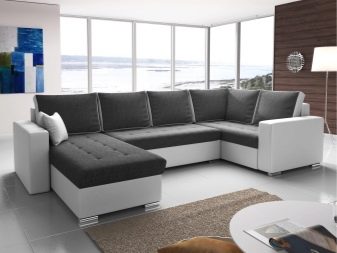
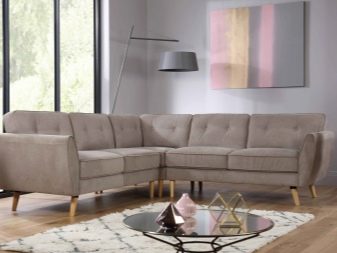
- Radius Models on legs there is nothing more than round-shaped sofas. Install them mainly in the center of the room, creating a comfortable guest area. These modifications are large and have different levels of functionality, usually they are soft and voluminous.
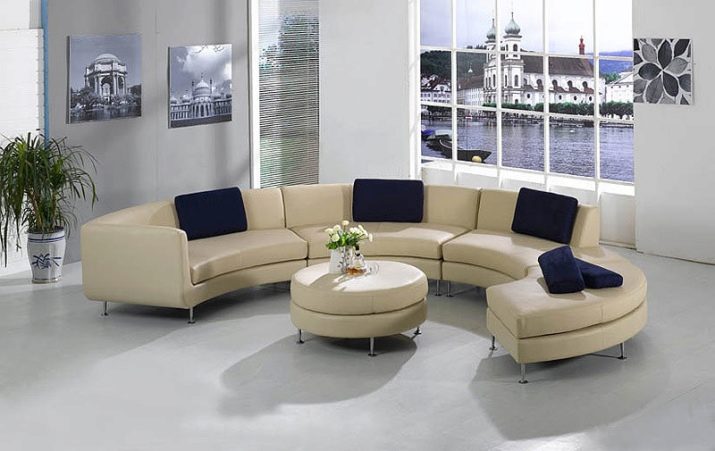
- Round counterparts on the legs are transformer models. When assembled, they have the shape of a semicircle, complemented by different backrests in configuration, but rarely equipped with armrests. As they unfold, they turn into a circle, while the number of blocks forming a berth may vary.
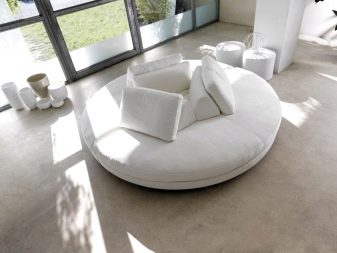
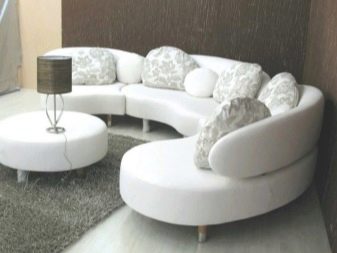
- Modular sofas on legs consist of a set of upholstered furniture or separate sections. They are assembled at their discretion, ordering the seller to assemble the resulting model. In addition, the products can be sold without rigid fixation, which allows you to vary the design model of your own free will.
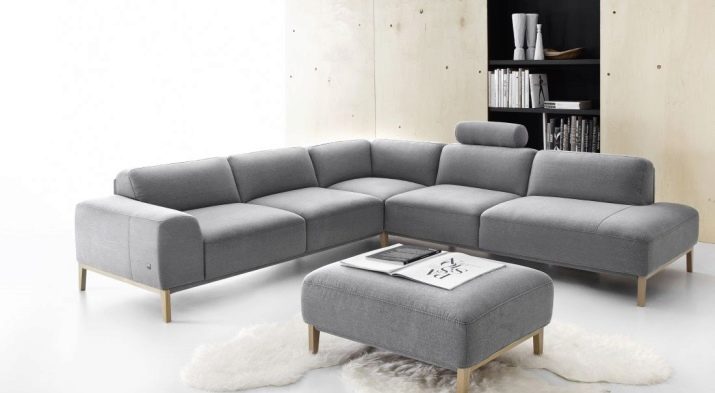
By type of construction
By type of construction, modifications are divided into stationary and transformable models. Products of the first type do not include folding, but can be equipped with built-in storage systems. They are bought for seating, equipping them with small rooms of their home.
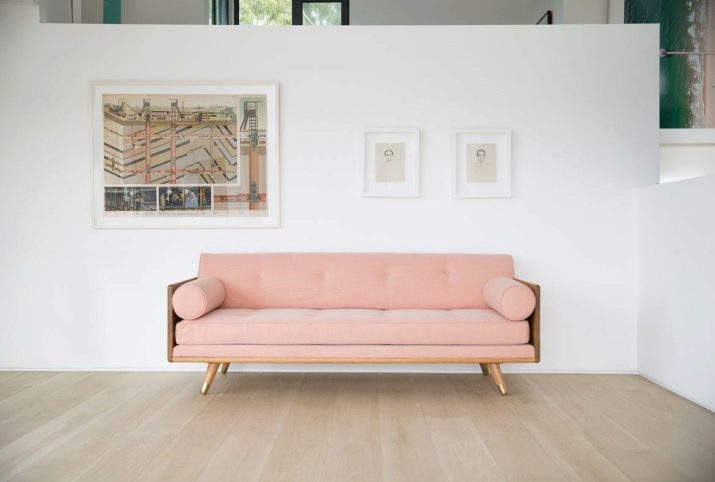
Such furniture can be completely miniature, which allows you to place mini-models on glazed arbors, loggias and balconies.
Analogs with transformation mechanisms have a berth. As they unfold, such a sofa turns into a full-fledged bed, sometimes even orthopedic, as it is equipped with an orthopedic mattress. Other designs are designed only for the comfort of the user, and therefore do not have an optimally rigid base, they are as voluminous as possible, are modular, sectional and even bay windows.
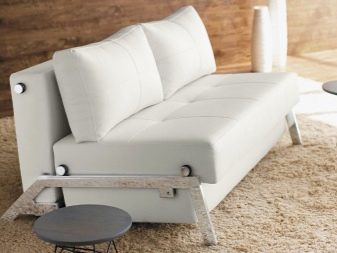

The transformation mechanisms of sofas are folding, sliding, retractable, lifting, swivel, folding.
The folding sofas on legs are more convenient in comparison with analogues without supports. Due to the presence of supporting elements, the back side of the upholstery material is retained. The transforming sofa can combine the functions of a sofa, bed, table, wardrobe.
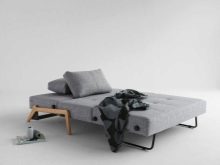
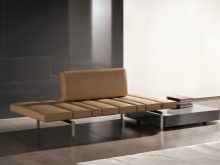
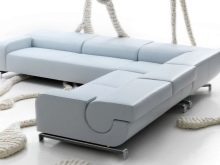
What are the legs?
Supporting structural elements are different. By type of execution, they can be stationary and adjustable. Products of the second group are considered universal support mechanisms, since they allow you to align furniture even on an uneven base. The adjustable element is a screw mechanism, it is easy to operate.

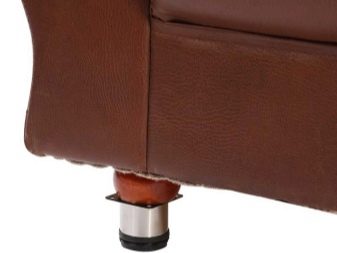
Besides, supports for sofas can be roller. In fact, these are elements in the form of wheels that increase the mobility of structures, and also prevent damage to the floor covering. Roller legs are responsible for the noiseless movement of the sofa, resistance to significant mechanical stress. According to the type of execution, they are rotary and upright, along the support node - bearing and bushings, according to the type of placement - external and hidden.
By design, support elements are strictly functional and functional decorative.

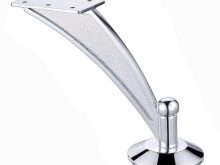
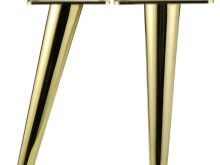
By type of manufacturing material - wooden and metal. In this case, metal options can be chrome plated or anodized.
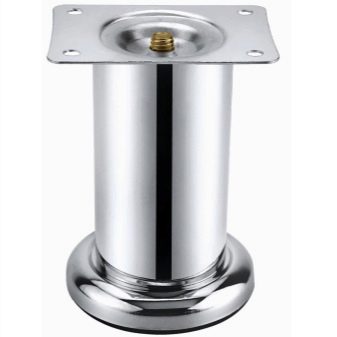
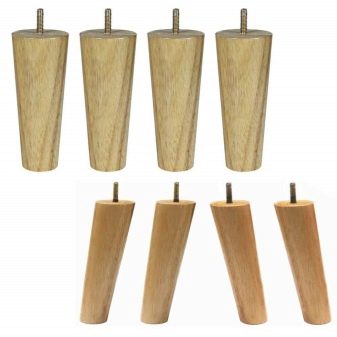
The height and shape of the legs of the sofas can be on high, low, thin, wide, rectangular, conical supports.
At the same time, long and carved legs are made of wood.
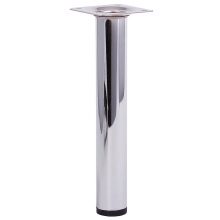
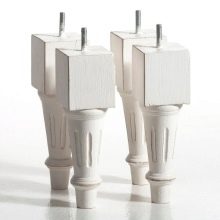
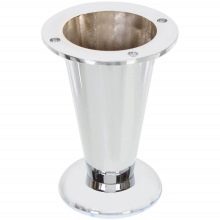
Materials
In the production of upholstered furniture, different raw materials are used. The frame of sofas is made of wood (oak, beech, birch), as well as metal (steel and aluminum). In addition to wood itself, its products (plywood, MDF and chipboard) are often used in production. As a filler, polyurethane foam, synthepuh, and also a spring block are used. In this case, the type of berth can be made from a combination of springless and spring material.
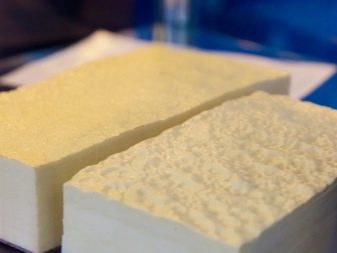
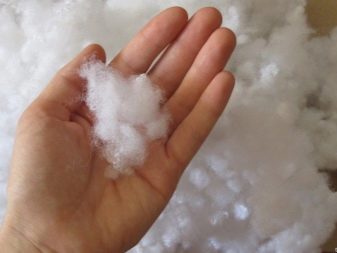
The sofas are lined with natural and artificial leather, in addition to them, textiles are used in the manufacture of upholstered furniture: flock, furniture tapestry, velor, jacquard, velvet, chenille.
The best type of textile upholstery is flock. This anti-vandal coating is resistant to pet claws, abrasion and moisture.
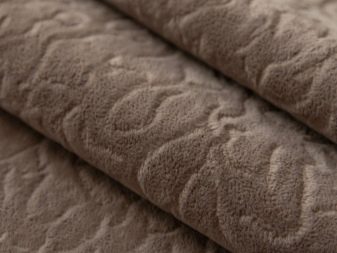
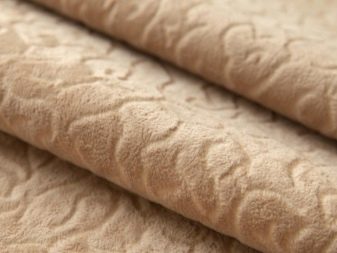
The supports of sofas are wooden, metal (iron, reinforced concrete, cast iron). Depending on this, they may or may not have chrome plating.
Dimensions
The dimensions of the sofas on the legs can be different. Small-sized models, designed for 1 person, can be assembled about 1-1.5 m. Others even resemble a chair-bed, differing in a folding mechanism for transforming forward. The berth of such products averages 1.5 m (for children's models) and 1.8 m (for products for adults).

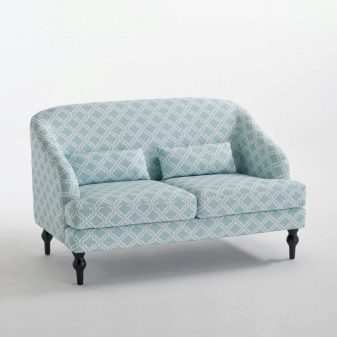
Small sofas can have narrow seats with an average depth of 45 cm. Other modifications are more comfortable, their seat depth is 60-80 cm with a width of 1.2-1.5 m. The size of a berth for double and triple analogues is more than 2 m. Light length stationary structures is about 2 m.
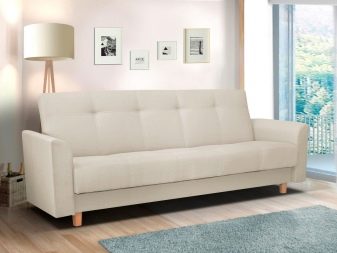
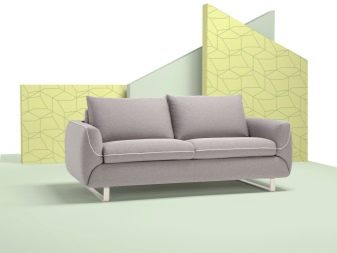
The standard height from floor to seat level is 45 cm. The height of the backs may vary. Tall models often reach 1-1.15 meters, low furniture is about 70-80 cm high from the floor to the edge of the back. Moreover, the height of the supporting elements can be different. The thickness of the armrests varies from 10 to 25 cm, in some varieties it is more.

Styles and colors
The color of the sofa for interior decoration may be different, but at the same time it is selected based on the background solution and the shade of existing furniture for a particular room in the home. Today, fashionable shades of sofas are considered beige, creamy, light gray, pistachio, graphite and brown.
Bright accents of the interior will be models in turquoise, wine and orange colors.
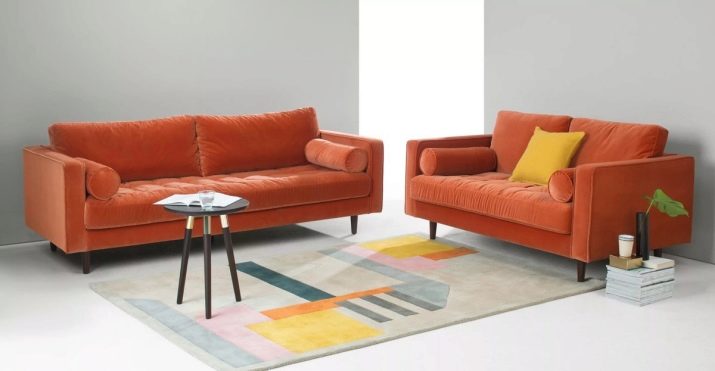
The most fashionable are several areas of design, such as hi-tech, modern, loft, chalet, brutalism, art deco, minimalism and Scandinavian style. Sofas created in different styles differ in shapes and colors, but they have common features: in most cases, they have plain upholstery with a nice texture, and also differ in the average and low height of the legs. Most of them are chrome plated. Classic style models are distinguished by rich decor and carving of supporting elements.
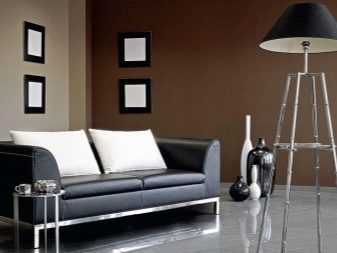
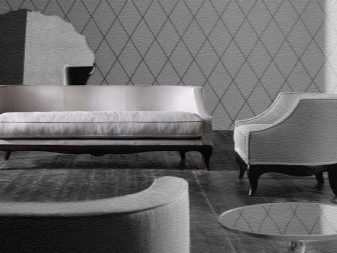
How to choose?
When choosing a sofa on legs you need to pay attention to several nuances:
- seat depth, backrest height and tilt, seat comfort;
- functionality - availability of a berth and boxes for linen;
- practicality of the transformation mechanism (for folding models);
- the presence of soft linings on the legs, extending their service life;
- reliability and durability of the material for manufacturing support legs;
- design of the structure, its shape, matching to existing furniture;
- color scheme and type of texture, choosing a specific room for the interior design;
- the size of the sofa, taking into account the dimensions of a particular room;
- reputation of the seller; quality of carcass and upholstery materials.
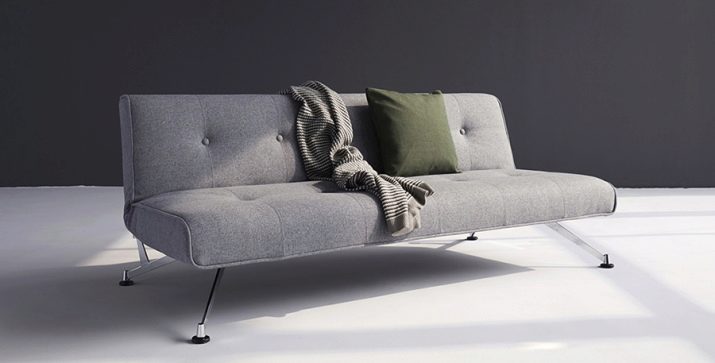
In addition, the style of the interior is important. You need to buy a sofa taking into account the chosen style in which a specific room is arranged.
Beautiful examples in the interior
We offer 10 stylish ideas for arranging the interior with a beautiful and functional legged sofa.
- An example of choosing a modular sofa with pillows for arranging the guest area.
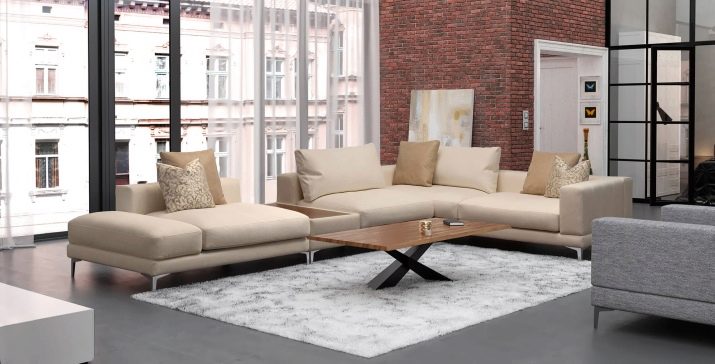
- Sofa with wooden armrests and powerful legs. The product is a key element of the living room.
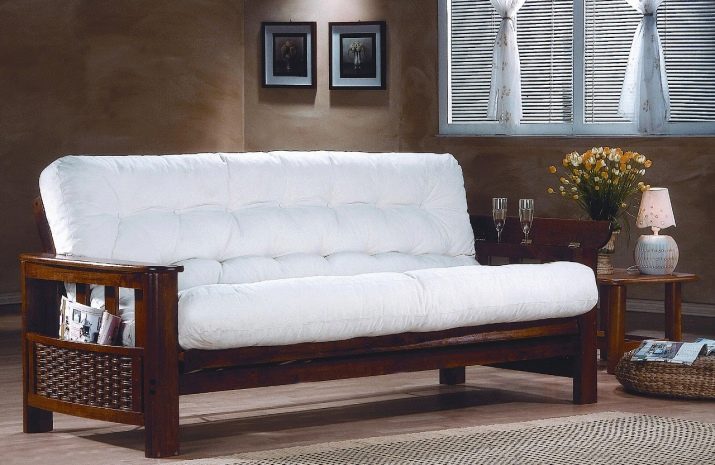
- Model in a modern style. Used for zoning open space.
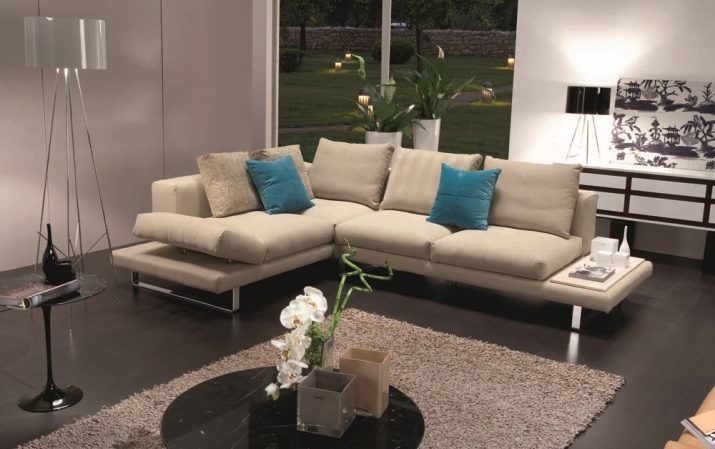
- Sofa with rounded sides and golden legs as an expressive accent of the living room.
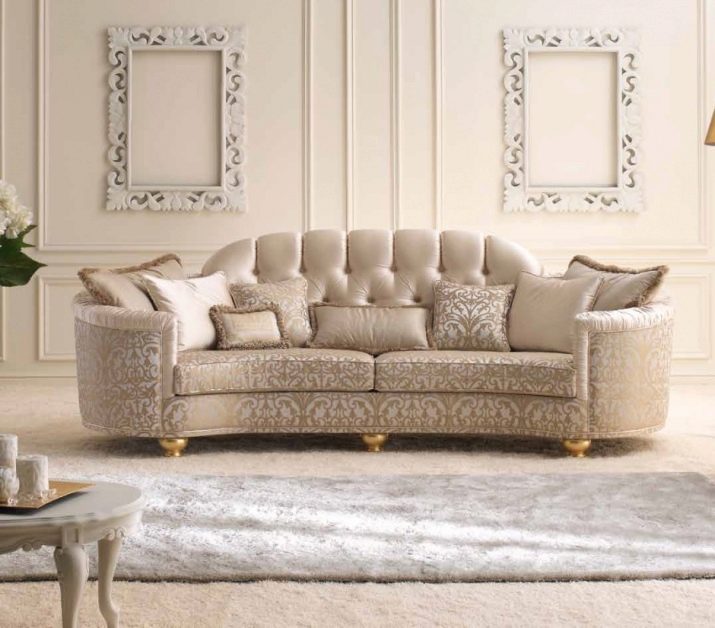
- Leather sofas with cushions on the seats and backs, outlining the boundaries of the guest area.
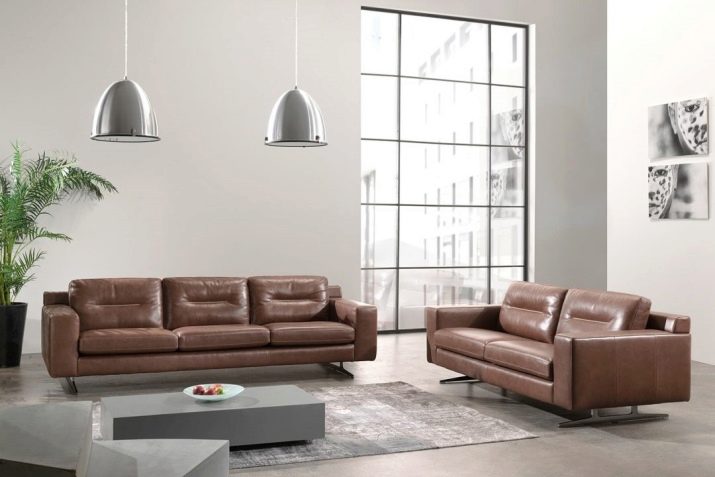
- Choosing a sofa with decorated legs and armrests for arranging a bright room.
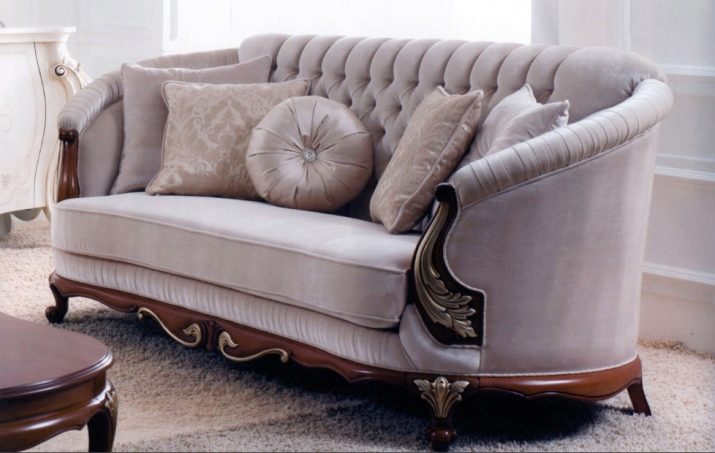
- A sofa with a carriage screed and curly legs, chosen to create a cozy atmosphere in a country house.
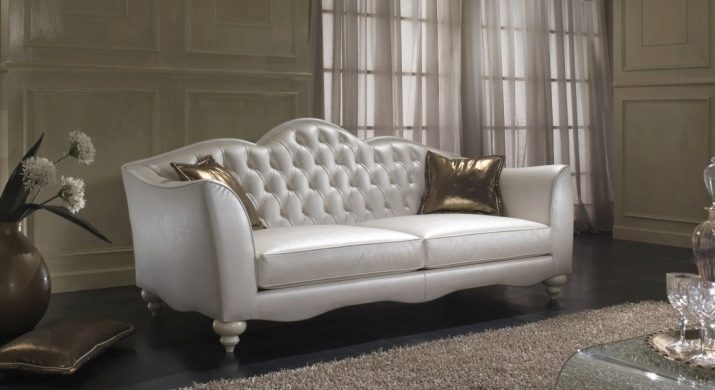
- Registration of the guest space with compact furniture on wooden legs.
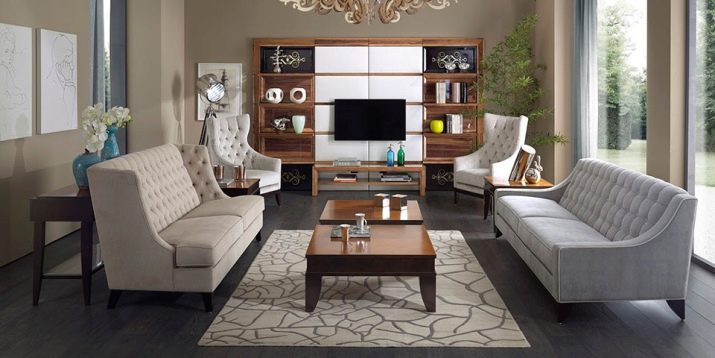
- Modular furniture in the interior of the dwelling with an open plan. Choosing a sofa for a country house.
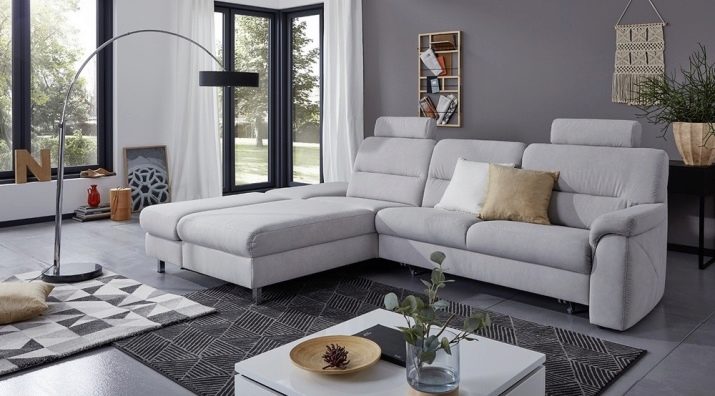
- Sofa with decorative pillows and white legs, chosen to design a bright living room.
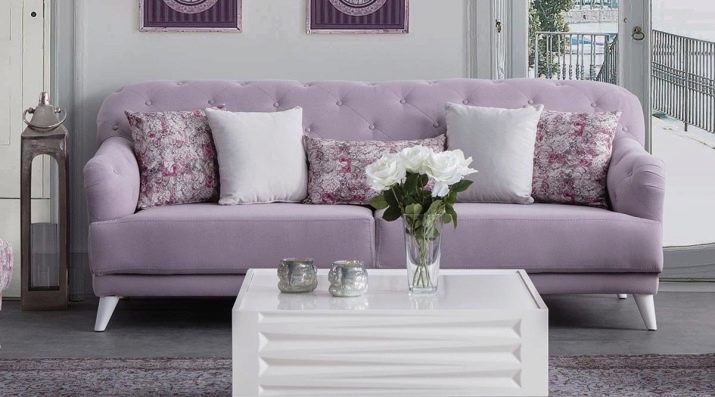
Overview of the sofa with high legs with a berth further.
